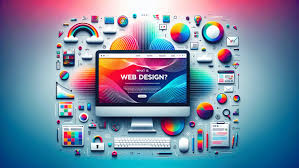WEB DESIGNING In Hyderabad


Web Designing in Hyderabad – A Complete Guide
Web Designing in Hyderabad is a growing industry that focuses on creating visually appealing, user-friendly, and responsive websites. Whether you need a corporate website, an e-commerce store, or a personal blog, professional website development in Hyderabad ensures that your site meets modern design standards.
Key Aspects of Web Designing
Layout Design
- Determines the structure of the website.
- Includes grids, alignment, spacing, and responsiveness.
Typography
- Selection of fonts and text styling for readability and aesthetics.
Color Theory
- Choosing a color scheme that reflects the brand’s identity.
- Ensures accessibility for all users (contrast and readability).
Graphics and Visuals
- Incorporates images, icons, and videos to enhance engagement.
User Interface (UI)
- Focuses on the look and feel of the website.
- Prioritizes intuitive navigation and aesthetic appeal.
User Experience (UX)
- Ensures the website is easy to use and meets user needs.
- Focuses on performance, load times, and responsiveness.
Responsiveness
- Designs that adapt to different devices (desktop, tablet, mobile).
Accessibility
- Makes the website usable for people with disabilities.
Tools Used in Web Designing in Hyderabad
Design Software
- Adobe XD, Figma, Sketch (for wireframing and prototyping).
- Photoshop, Illustrator (for creating visuals and graphics).
Front-End Development
- HTML: The structure of the webpage.
- CSS: Styling and layout.
- JavaScript: Adds interactivity and dynamic elements.
Frameworks and Libraries
- Bootstrap: For responsive design.
- Tailwind CSS: Utility-first CSS framework.
- React, Vue.js: For interactive components.
Content Management Systems (CMS)
- WordPress, Drupal, Joomla for easier website management.
Testing Tools
- Google Lighthouse: For performance and accessibility testing.
- BrowserStack, LambdaTest: For cross-browser testing.
Steps in Website Development in Hyderabad
1. Planning
- Understand the client’s needs, target audience, and goals.
- Create a sitemap and wireframe.
2. Design
- Choose a visual style (minimal, modern, professional, etc.).
- Develop mockups using design tools.
3. Development
- Convert designs into code using HTML, CSS, and JavaScript.
- Ensure responsiveness and cross-browser compatibility.
4. Testing and Launch
- Test the website for bugs, broken links, and usability.
- Deploy the website to a live server.
5. Maintenance
- Regular updates and optimizations to ensure functionality.